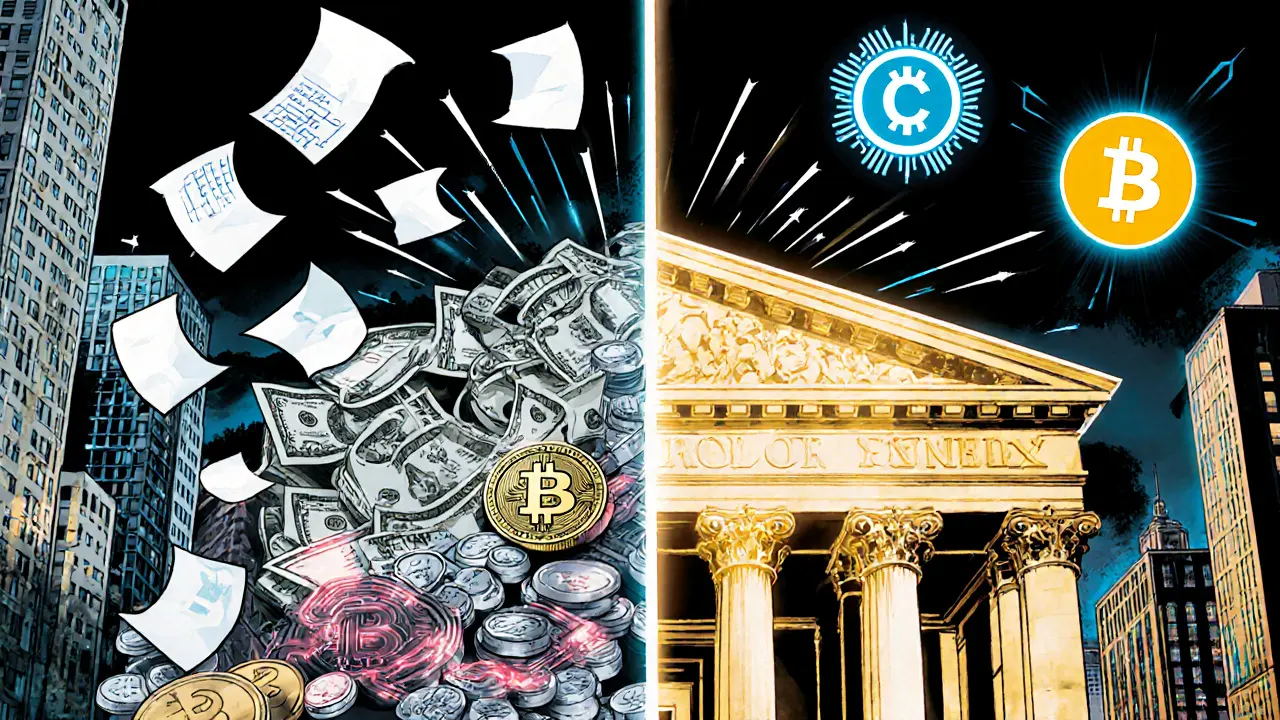Stablecoin: Definition, Types, and Regulatory Landscape
When working with stablecoin, a digital asset pegged to a low‑volatility reference like the US dollar, euro, or a basket of assets. Also known as stable digital currency, it aims to combine crypto’s speed with the price stability of traditional money. USDC, a fiat‑backed, fully audited stablecoin issued by Circle and Coinbase exemplifies the most trusted fiat‑collateral model, while algorithmic stablecoin, uses smart‑contract‑driven supply adjustments rather than reserves to keep its peg shows how code can replace cash reserves. Governments are also entering the space with central bank digital currencies (CBDCs), state‑issued digital versions of fiat money that share the stability goal of stablecoins but differ in legal status and control. Understanding these four entities—stablecoin, USDC, algorithmic stablecoin, and CBDC—helps you see how the sector balances trust, technology, and regulation.
Key Aspects of Stablecoins
The stablecoin ecosystem hinges on three core attributes: collateral model, governance, and regulatory compliance. Collateral can be fiat‑backed, crypto‑backed, or algorithmic; each brings a trade‑off between transparency and risk. Governance structures range from centralized issuers (like USDC) to decentralized autonomous organizations managing algorithmic protocols. stablecoin projects now face stablecoin regulation, a rapidly evolving set of rules from bodies such as the U.S. Treasury, the European Commission, and the UAE’s VARA that dictate reserve reporting, consumer protection, and anti‑money‑laundering standards. Recent trends show regulators pushing for real‑time reserve audits and clearer definitions of “stable” in the context of algorithmic mechanisms. For traders, these rules affect liquidity, market access, and the cost of moving funds across borders. For developers, compliance influences token design choices, smart‑contract audits, and partnership strategies with custodians.
Below you’ll find a curated selection of articles that break down the most pressing topics around stablecoins. From deep dives into USDC’s audit practices and the risks of algorithmic designs, to global regulatory snapshots and actionable guides for building compliant stablecoin products, the collection offers practical knowledge for investors, developers, and anyone curious about how stable digital money is reshaping finance. Dive in to see how the different models compare, what regulators are demanding right now, and which tools can help you navigate this fast‑moving space.





